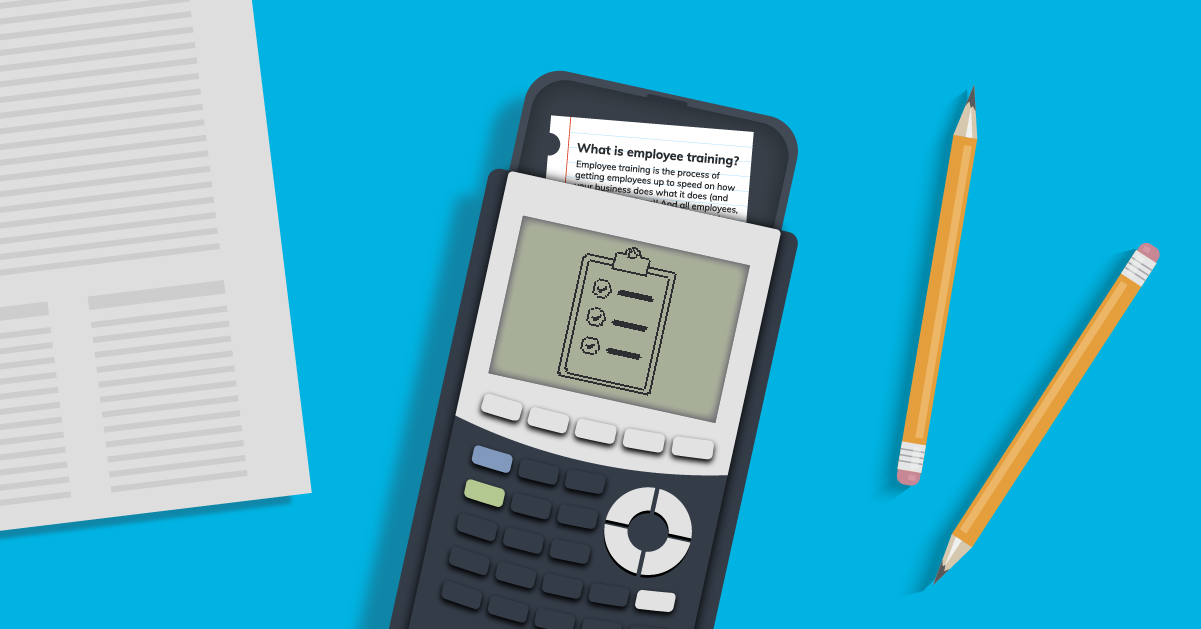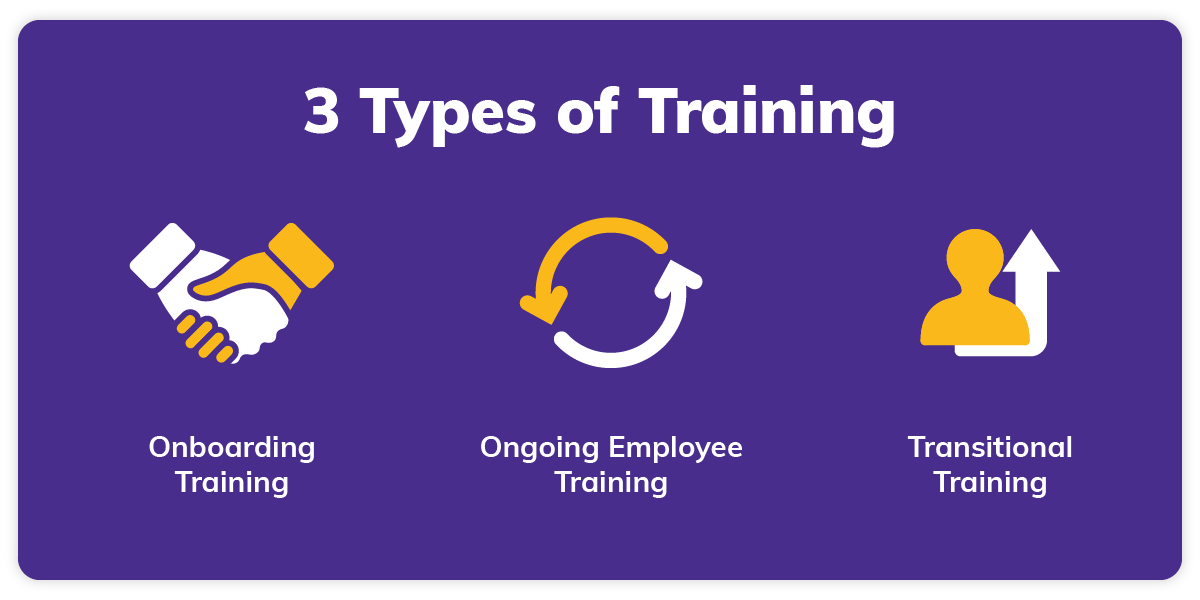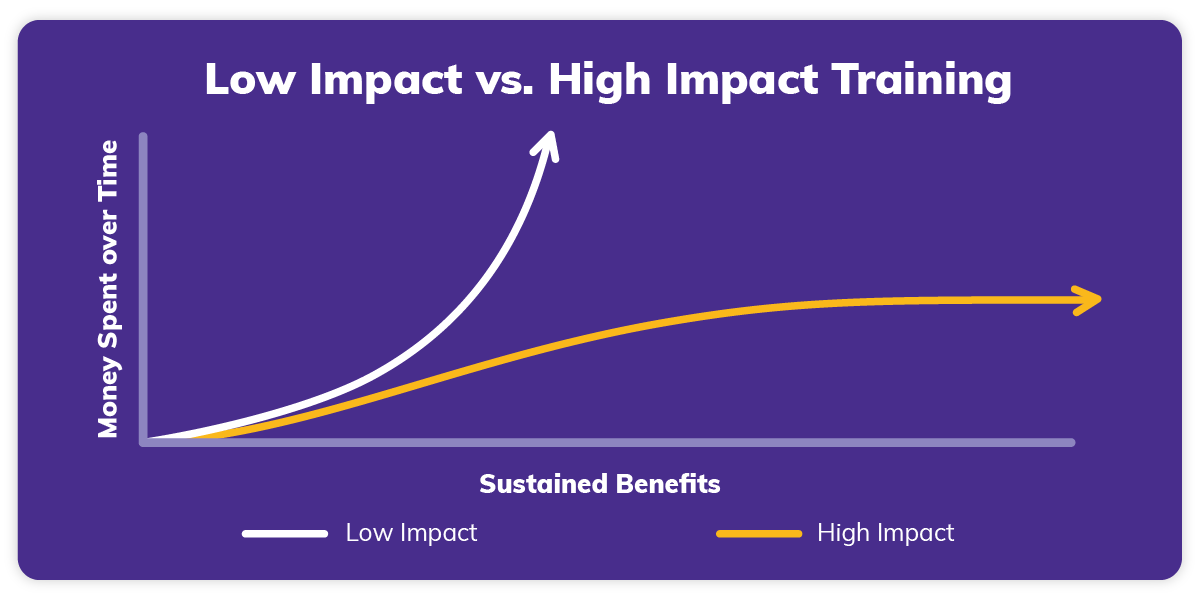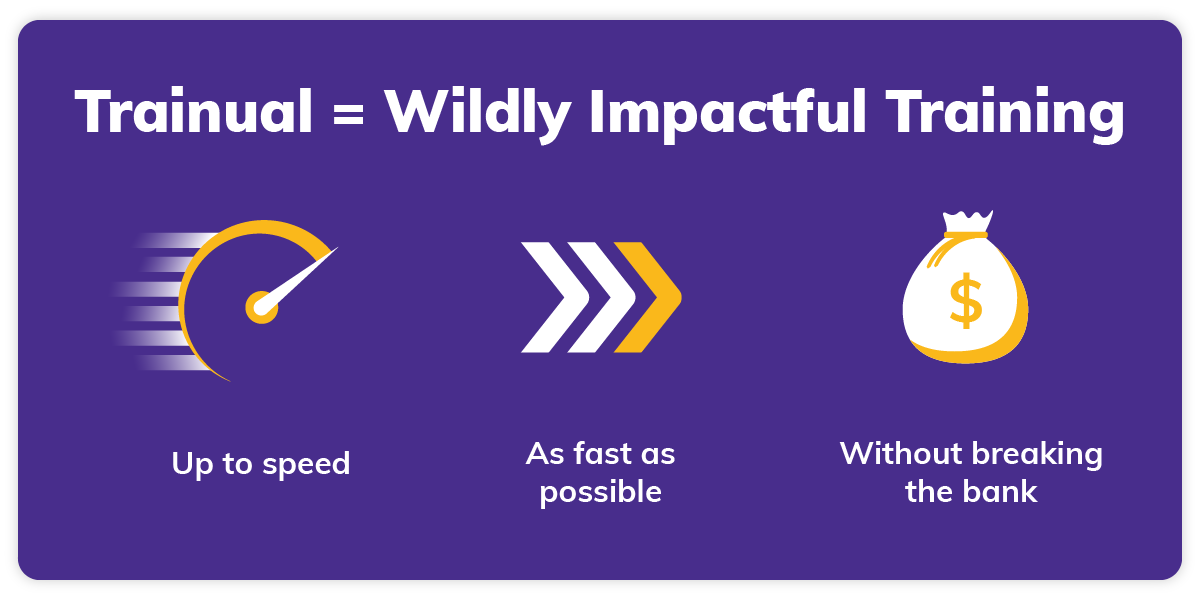
Articles
The Official Employee Training Cheat Sheet
September 9, 2020

The answers to every employee training question you’ve ever asked, wondered, or stumbled to answer – now in one cheat sheet!
(No calculators or ball caps required.)
What is employee training?
Employee training is the process of getting employees up to speed on how your business does what it does (and keeping them there)!
And all employees, from your newest hire to your founder, need to go through training from time to time. No exceptions.
Here’s the catch! There’s no such thing as a one size fits all training program. So the best programs get team members fully productive while making them feel supported and confident in their role.
So depending on which team members you are training and what they need to learn, your training program is going to look a little different.
But the one thing all employee training programs have in common is a clear-cut end goal. This might be to close this skill gap, refresh outdated knowledge, develop skills, or, more generally, to align employees – just to name a few. But there has to be at least one.
That way, you know what your training should cover and how you can measure if it was a success! AKA if your training program was wildly impactful or you need to try a new approach.
Why is employee training important?
Your company's training program is an investment in not just your people, but the company as a whole. And it can be the key to increasing productivity, boosting morale, and making your business more profitable.
For starters, trained employees make fewer mistakes and are more productive. That's because your team is equipped with the knowledge and skillsets not just do their job, but excel at it.
Employees who feel supported tend to feel happier at their company and more confident in their role. And they're less likely to search for another job.
Plus, as woo-woo as this sounds, your customers will be able to tell this. And it actually makes them more likely to see your company's value and invest in your product.
So, there really is no excuse not to invest in your employee training.
What are the types of employee training?
There are 3 types of employee training – onboarding training (also referred to as new employee training), ongoing employee training, and transitional training.
And each one focuses on a different point in an employee’s career with your company. That’s because the training that an employee needs on Day 1 is totally different from the training they’ll need 5 years in. So sending both of them through the same training program doesn’t make sense.
Instead, you’ll want to make sure every employee goes through all 3 types of training (some of them, routinely)!

Onboarding Training
Onboarding training (also known as new employee training) is the part of the employee onboarding process where you get your new hires up to speed.
Centered around the new hire experience, onboarding training starts the moment they finish orientation and ends when they’re confident in their new role.
Most companies take a more hands-on approach to this type of training. And they combine several different employee training methods to accommodate a range of learning styles, experiences, and levels of expertise.
The goal of onboarding training is to teach them how you do what you do and plug them into your company’s culture.
Ongoing Employee Training
Ongoing employee training keeps your people up to speed – and on the same page. This includes any individual, team, department, or company-wide development.
Like getting the oil changed in your car, this type of training keeps everything running smoothly and efficiently.
But unlike oil changes, ongoing employee training isn’t as simple as running a session every 5,000 miles. Instead, you should consider this type of maintenance anytime there is a significant change to your product, policies, processes, or procedures.
This can be as simple as creating training content to reflect the new information and rolling it out company-wide. Or as elaborate as building a weeklong event – totally up to you!
Transitional Training
Transitional training happens whenever someone at your company is promoted, changes teams, or has a significant change to their responsibilities.
And it occupies the middle ground between onboarding and ongoing employee training. Like ongoing employee training, you need to recognize the employee’s prior knowledge.
But you also need to fill in the gaps that come with new responsibilities. Because of this, it’s typically best to take a more hands-on approach like onboarding training. That way, you cover all of the policies, processes, and procedures that the employee may not have needed for their last role.
How often should employee training happen?
Employee training should happen consistently and frequently.
A lot of companies take the “set it and forget it” approach to employee training. But a one-time training program that covers the basics isn’t enough to set your team members up for success.
In fact, this approach leaves team members frustrated and guessing the right way to do their role. And is more likely to lead to avoidable mistakes.
Instead, you want to train your employees anytime they have a significant change in their responsibilities, or your company changes how they do what they do.
But training doesn't have to be a super disruptive event like the annual, company-wide training marathons!
It can be as simple as logging into Trainual for a few minutes every week and reading up on the latest information. (We highly recommend this approach over the other annual training marathon!)
That way, your team is always up to speed. And they don't need to put all their responsibilities on hold to stay that way!
How much do companies spend on training per employee?
The average training cost per employee is around $1,500 annually and 50 hours per year. Mostly depending on factors like industry, company size, budget, and the scope of your training program.
But to be completely transparent, this budget is out the wazoo and doesn’t mean that your training is impactful. In fact, it’s one of those rare cases where having a bigger budget actually gets in the way.
Two reasons for that.
One, when teams are given a set budget to run employee training programs, they tend to feel that they need to spend it all. Or at least, as close to that number as possible without going over.
But hyper-focusing on the numbers actually detracts attention away from what’s important: the training.
And two, with the focus on the numbers, the training part of employee training is an afterthought. This leads to a lot of companies either presenting the outdated training content or not training engagingly.
But only 25% of these companies report seeing sustained results from their training.

That means the other 75% actually end up spending way more long term fixing avoidable mistakes and retraining employees. And none of these costs are factored into the average training cost per employee. AKA these companies are now over budget!
Meanwhile, companies that invest in employee training software spend a fraction of the cost and build wildly impactful training programs every time.
But how much should I invest in employee training?
When it comes to training, you want more bang for your buck! And the best way to do that is with a really good employee training software.
Minimum, this software should:
- Organize all your business knowledge in one, centralized place
- Be able to assign content directly to employees
- Quickly get employees up to speed and keeps them there
- Test for both retention and understanding
- Track who knows what so you can keep people accountable
- While making wildly impactful employee training cheaper
This way, you easily get your employees fully up to speed and see more consistent results! Plus, you can roll out changes to the way you do things on the fly and know that everyone is on the same page!
Just make sure that when you find the right training software, you add all your documented knowledge, policies, and procedures in there!
Spoiler: Trainual is the world’s top-rated employee training software and the best tool for building wildly effective training programs for a fraction of the cost.
How do I track employee training?
The easiest way to track employee training is by leveraging a software that does this for you. (We might be biased - but we find Trainual is the best for this!)
Only about 50% of companies bother tracking what their employees had to say about the training. Even less track the long-term impact of the program. And some don't even track who went through which programs.
If you want to see just how impactful your training was, you need to – at the very least – track who knows what. Plus, how much your trained employees retained.
And for most employee training softwares, this function is built-in.
For example, Trainual provides companies a quick overview of what content everyone was assigned, if they went through it, and when.
That way, you can then test for comprehension, understanding, and retention over time. This will let you know if your employees actually learned the material or not – and hold them accountable in the field.
But you should also track if your team is actually applying the new knowledge. To do this, find a hard business metrics that directly reflect the intended purpose, such as revenue per employee.
If this isn’t possible, opt for related metrics to provide insight on how impactful the training really was, such as consistency of behavior changes. That way, you can focus your training on what isn't making your business safer or more profitable.
What’s the best way to train employees?

To be completely frank, not every employee training software is created equal. And Trainual is the top-rated employee training software, trusted by over 50,000 users in 120+ countries, to make every training wildly impactful.
By organizing business knowledge in one, searchable place, Trainual creates an interactive training manual that your employees can access from anywhere.
And by using a combo pack of training methods, Trainual even makes the training stickier. This means that your employees get up to speed faster and actually stay there.
Simply assign content directly to employees, track that they went through it, and test that they understood it all. That way, there is no question of who knows what.
Plus, if for whatever reason something doesn’t stick, employees can access the information on their own in seconds and refresh.
But here is the best part: the price you see is all you spend.
There are never any hidden costs for extra features to make the software work, retrain employees, or compensate for productivity loss. Making it the only training software that gives you more bang for your buck.
Similar Blog Posts











